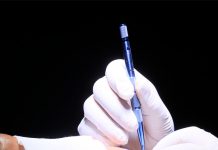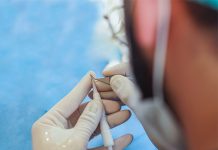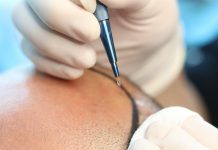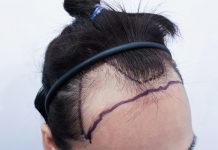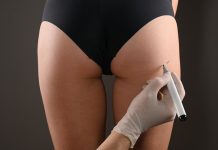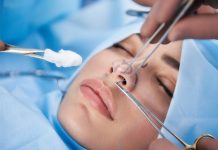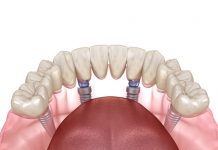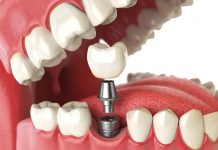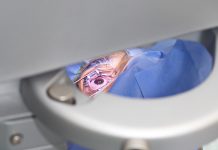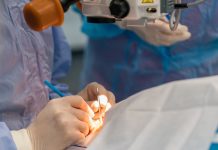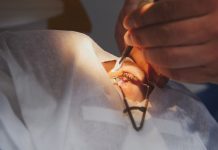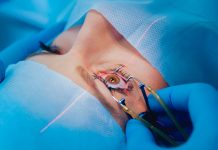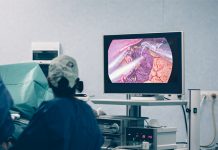Breast Augmentation
Breast Augmentation in Turkey, its average cost, types, fat transfer or breast implant enlargement procedure and everything you should know about.
Breast augmentation, also known as a ‘boob job surgery’, comes first on the top of the list of the most desired cosmetic surgery procedure in plastic surgery desired by women from all ages, due to their will to improve their self-esteem, fell and look better in their own skin either in a bikini or a light cashmere blouse. Breast augmentation is aiming to provide an enlargement of the breast size and improvement of the breast shape, typically with the help of silicone cohesive gel implants from new generation as well as saline breast implant, both depending on the practice and the choice of the surgeon. Furthermore, together with the aesthetic effect implant provide, breast augmentation is considered as a highly effective procedure in terms of rectification of visible breast asymmetry, and breast implants come to many women’s aid as a multi-purpose instrument used for correcting unwanted breast deformities. Breast augmentation cost is between £1,400 – 7,000.
They combine the beauty with the necessity for all women. In compliance with the patient’s natural proportions, creating a more symmetrical appearance and providing natural-looking breasts are regarded as the main professional objective of breast augmentation surgery. From this standpoint, cosmetic breast augmentation is performed in order to enlarge breasts which are naturally small or asymmetrical, restore breast size and shape affected by pregnancy, weight loss, breastfeeding or any kind of surgery, fill out breasts that used to be larger, and correct symmetrical conditions. The details on exactly how to execute the breast augmentation operation is largely dependent on the patient’s individual needs and must definitely be determined by a detailed consultation with a board plastic surgeon as this is the way the rights operation technique will be determined for every individual case.
As mentioned before, breast augmentation surgery provides definitive solution to long lasting problems and insecurities, however every women’s breast is unique as well as the current situation. For this reason a detailed assessment with an experienced plastic surgeon to decide the treatment plan in advance and explain it to the patient is primordial. Briefly stated, breast augmentation procedure allows surgeons to increase the fullness of the breasts and enhance the general balance of the breasts, thus improved self-image and a confident outlook. However, when it comes to breasts with sagging tendencies, an additional breast lift surgery may be required for a fuller appearance as breast augmentation alone is usually not effective enough for correction of saggy breasts.
Am I a Good Candidate for Breast Augmentation?
Whether to undergo a breast augmentation surgery is an exceptionally personal decision which should be made without being prejudiced by anyone else, but it’s important to remember that there are several criteria that you should meet in order to be classified as a possible candidate for breast augmentation surgery. You may be considered as a good candidate if:
- You are physically healthy, meaning you do not have any kind of serious illnesses or infections as they can interfere with the success of the operation and the smoothness of the recovery period. If you have any medical conditions, it’s critical to inform your surgeon so that the decision phase will be proceeded by taking these circumstances into consideration.
- Your breasts are fully developed; in other words, you must be at least 18 years old.
- Small size of your breasts displeases you. Your breasts are asymmetrical, elongated, or lacking adequate volume. One or both breasts failed to develop healthily. These bothering conditions are regarded as valid reasons for a breast augmentation surgery.
- Experiences of pregnancy or weight loss, or just aging process resulted in undesired size or shape of the breasts.
- Preferably you do not smoke or consuming moderate amount of alcohol.
- You have healthy mental capacity providing eligible decision-making abilities as this type of surgeries involve permanent changes on physical appearance.
- You are aware of all of the risks and complications as well as advantages of a breast augmentation operation. While it is widely considered as a safe procedure, you should always remember that it is still an invasive surgery.
- Your daily routine allows you to properly rest after the surgery, and you have someone who will be able to help you throughout the recovery period considering you will not be able to perform certain everyday tasks for a week time.
- You should discuss your realistic expectations with your surgeon to make sure the desired result may be achieved.
Who Is not a Good Candidate for Breast Augmentation?
Generally, you will not be considered as a good candidate for breast augmentation surgery if you meet any of the following criteria:
- Being currently pregnant, breast-feeding or recently stopped breast-feeding,
- Diagnosed breast condition or a history of abnormal mammogram,
- Having breast cancer and have not yet been treated,
- Severe infection in the body.
What to Expect from Initial Consultation?
The first step of the breast augmentation procedure is a private, one-on-one consultation with one of our expert plastic surgeons in order for determining the details of the whole process. The initial consultation will vary from surgeon to surgeon, but there are several subjects which are touched upon in all likelihood, such as:
- Reviewing your medical history and general health status,
- Discussing your goals and expectations, and the desired results,
- Medical conditions, allergies, medications, tobacco or alcohol consumption,
- Family history of breast cancer,
- An examination including a thorough breast measurement.
- Information on the course of the process as well as the details of the procedure.
- Explaining types and shapes of implant options, and making a decision,
- Discussing possible results of the surgery and any risks or potential complications
- Information about the recovery period.
What Type of Implant Options Do I Have?
Breast implants are medical prosthesis which are implanted under the breast tissue or pectoral muscle to increase breast size, reconstruct or replace breast tissue, removed due to a trauma. There are two main types of breast implants, widely used in breast augmentation surgeries, namely:
1) Saline-filled breast implants:
Saline implants are filled with a sterile saline solution, confined within an outer shell that’s comprised of silicone. They are placed empty, and then filled once they are in position. These implants can be filled with different amounts of saline solution, adjusting the firmness and shape of the breast. If there is a leakage anywhere on the implant, the solution will be naturally absorbed and expelled by the body.
2) Silicone gel-filled implants:
Silicone implants have a silicone outer shell, and they are filled with a silicone gel in advance. In comparison with saline, silicone has a higher level of viscosity which gives the breasts a more natural looking appearance. Using a thicker material such as silicone creates a sensation similar to breast tissue in touch. They are considered safer as tested with high capacity pressure machines to prevent any rupture. If case of a leakage, the gel will be either trapped in the shell or head toward breast implant pocket. At this point, it will be useful to mention a relatively newer and high-technology implant type which is gummy bear implants. Involving highly cohesive silicone gel, this type of breast implants includes both a silicone shell and a silicone gel filling.
The main advantage of gummy bear implants is that, compared with other silicone implants, the thicker silicone filling enables the implant to retain its prior shape and gives a softer texture to the breasts. Contrary to the traditional silicone breast implants, gummy bear implants does not lose their shape even if their shells are broken thanks to their viscous gel content. In terms of shape and form of the breast implants, there are two main types of implant shapes, namely:
3) Round breast implants:
Round breast implants have a circular shape with various projections and diameters. They typically have a shell filled with saline or fluid silicone gel, and this fluidity gives the implant a dynamic quality. Round breast implants provide a fuller appearance in comparison with their stable counterparts.
4) Anatomical teardrop breast implants:
Teardrop implants are designed to imitate the natural shape of the breast with a thicker silicone gel filling which holds this shape. They offer an oval and asymmetric shape similar to a literal teardrop: a smaller and thinner upper side, and more round-shaped mass at the base providing a natural slope. This is why teardrop implants can also be called “form-stable” implants. The semi-solid gel within the implant is relatively stable and firm, so the teardrop shape is fixed while maintaining its softness.
How to Prepare for Breast Augmentation Operation
Any type of surgery requires various preparation steps for the operation to proceed as smoothly as possible. Likewise, before getting a breast augmentation surgery, you should spare some time to getting completely ready for the operation, and for your recovery phase. In order to ensure the success of the surgery, you should strictly follow our recommended preparation guide, listed as below:
- Since you will not be able to get mammograms or get your routine dental procedures done for at least six months after the operation, you should schedule your appointments ahead of the surgery.
- Smoking is absolutely prohibited at least one month before the operation since it can disrupt your body’s healing abilities and leads to unwanted infections.
- Do not take medications and products such as aspirin, ibuprofen, vitamin E, herbal medicines etc. for 14 days prior to the surgery as they may have act as blood-thinners.
- You should have someone beside you who is able to provide support on issues like receiving instructions from nurses, driving you back home etc.
- Using an anti-bacterial soup, shower the night before and the morning of breast augmentation surgery, properly cleaning your chest and armpits. Do not use deodorant, perfume, powder or lotion.
- You should refrain from drinking alcohol at least a week before surgery.
- Follow our instructions about when to stop eating and drinking. Since it is a requirement for your stomach to be empty for at least 8 hours before your surgery, you should avoid eating anything after midnight to be sure. However, you are permitted to have a small sip of water with medication your surgeon told you to take.
- Wear loose clothing that has buttons at the front for your comfort.
Procedure
Your breast augmentation surgery will be performed in a surgical facility by our proficient and experienced surgeons. From beginning to end, your breast augmentation procedure will typically take one to two hours. For your utmost comfort, anesthetic agents will be administered during the breast augmentation procedure in accordance with your preference, local or general anesthesia. Over the course of surgery, you will be either completely asleep or awake. Incision techniques used by our qualified cosmetic surgeons will make it possible to minimize the resulting scars, so you will not have to be concerned about visible deformities. Depending on your body type and your desired outcome, your surgeon will use one of the following incision techniques determined during the consultation, including:
- Inframammary Incision: a short incision made in the fold under the breast, known as inframammary fold, which enables direct control on the implant positioning. Resulting scar will be extremely small and easily concealed under the breast crease. the milk-producing areas of the breast will be minimally affected, and the incision will provide a direct access to the implant for future modifications.
- Peri-Areolar Incision: the incision is made around the edge of the areola, resulting in a scar blended within the natural color transition. This type of incision is widely used when correcting nipple issues or performing a breast lift operation at the same time.
- Transaxillary Incision: a small incision made within the armpit which will allow your surgeon to insert the breast implant by means of a specific type of camera. In this case, there will not be any kind of scar on your breast, only a tiny mark within your armpit. However, it is important to note that additional incisions will likely be required for revision surgeries.
- Transumbilical: this type of incision uses a route through the belly button. With an endoscope or a small surgical camera, your surgeon reaches to a pocket under the breast through this incision. The breast implant is placed with the help of this tunnel and afterwards, inflated with saline solution. Transumbilical technique only makes the placement of saline implants possible; unfortunately, silicone implants are out of question.
After the incision process, the next step is separation of your breast tissue and/or the muscles depending on placement in order to create a pocket for the implant, and finally the insertion of the breast implant into the pocket either:
- Under the pectoral muscle, firmly behind the chest muscle wall (submuscular placement).
- Directly behind the breast tissue, over the pectoral muscle (subglandular placement).
- Or under the pectoralis major muscle (subpectoral).
The decision of where to insert the implants and positioning options heavily depends on factor such as the type of implant used for the breast augmentation surgery, limitations unique to your body type and the degree of augmentation determined beforehand. If you have opted for saline implants, then your surgeon will fill the implant with sterile salt water once it is in place. Silicone implants, on the other hand, are filled prior to the surgery with silicone gel. Once the placement and filling of the implant is completed, your surgeon will close the incision typically with layered sutures or stiches, and bandage it with skin adhesives and surgical tapes. This will be the final step of your breast augmentation surgery.
Fat Transfer Breast Augmentation
Fat transfer, also known as fat grafting, is a breast augmentation method of using patient’s own fat so as to create amplification on the volume of fat in another part of the body. The fat is harvested using a liposuction cannula from areas in which contain excessive fat cells such as the stomach or hips. Then the harvested fat is injected into areas that additional volume is needed, such as face or breasts, for medical or cosmetic intentions.
Fat transfer breast augmentation is considered as an option for women who desire a small increase in breast size with a natural-looking appearance and long-lasting effects, as well as for women who do not wish to proceed with breast implants. And to be regarded as a good candidate for fat transfer breast augmentation, it is important for you to have adequate amount of fat in your aforementioned body parts. At your initial consultation, you will be informed about the details of fat grafting by our specialists and learn whether you are a suitable candidate for the procedure or not, considering factors such as your anatomy and expectations regarding the results.
What Should I Expect from My Recovery Process?
Immediately after the breast augmentation surgery, you will be taken to recovery room so you can be monitored closely by our surgical team. You will likely feel mildly sleepy and sore around the surgical area as your body initiates its natural healing process, but this state will not take too much time. Once the anesthesia completely wears off and you are stable enough for discharge, you will probably be able to go back to your home, generally in a few hours. Before you leave the clinic, your doctor will put on gauze around your breasts as well as a surgical bra which will support your breasts during recovery process.
You will be given detailed instructions on what to do during the time of recovery and how to care for your incision areas. You will also receive post-operative prescriptions including medications like painkillers and antibiotics to prevent possible infections. Generally, the first few days after the breast augmentation surgery are considered as most uncomfortable. In order to minimize this discomfort as much as possible, your main focus should be helping your body to heal through adequate resting and avoiding doing everyday tasks, even the simplest ones. The post-operative care instructions given by your surgeon will likely include supportive precautions such as using ice packs, wearing specific garments or taking medications. Strictly following these instructions should be your priority in order to guarantee the success of the operation.
In the weeks following your breast augmentation surgery, there will be a gradual decrease in the degree of swelling and sensitivity. Nonetheless, you will need to avoid any kind of strenuous exercise or activity such as heavy lifting or running, especially a couple of weeks after the operation. Also, if you have a physically demanding job, you will be advised to take time off for at least 3 weeks. However, you will be able to do some light exercise and go back to your daily life, as you will feel much better at this point. In four two six weeks, the swelling and bruising as well as the tissues and muscles will probably heal completely, and your newly designed breast will have taken their final form. As of this time, there will not be any dramatic changes on your look, nothing more than scars fading away.
Every woman has a body unique to herself, thus it is not accurate to claim a specific timeline of full recovery. While it highly depends on your body’s ability to heal, you can expect recovering completely in about 2 months following your breast augmentation surgery. You will be provided with a more comprehensive explanation by our surgical team depending of your overall health evaluations.
Risks and Possible Complications
As with all types of surgeries, there is also a possibility of risks and complications associated with breast augmentation surgery, and it is very important to understand these risks involved Although they are considered as rare, in case of an unexpected issue, it is extremely important to immediately consult your doctor. Possible risks and complications come with breast augmentation surgeries can be listed as follows:
- Breast pain.
- Infection.
- Bleeding.
- Scar tissue forming and hardening in the area around the implant.
- Scarring.
- Wrong or faulty position of the implant.
- Problems with the size or shape of the implants (for example, the breasts may not be symmetrical).
- Changes in nipple or breast sensation.
- Anesthesia risks.
- Hematoma blood pooling under the skin. It can create discolored, possibly painful lumps.
- Implant leakage or rupture.
- The formation of tight scar tissue around the implant (capsular contracture).
- Fluid accumulation (seroma) collection of fluid around the implant.
- Wrinkling of the skin over the implant.
- Possibility of revision surgery.
- Necrosis, a very rare occurrence of tissue death.
- Bottoming out, an unnatural appearance resulting from a pocket which is cut too large.
- Obstruction of mammography, the saline or silicone in breast implants can mask x-ray results.
Will Breast Augmentation Surgery Increase My Risk of Breast Cancer?
One of the most frequently asked questions about breast augmentation surgery is whether it increases risk of breast cancer or not, but many scientific studies have shown that it does not.
Moreover, breast implants do not make it difficult to diagnose breast cancer. The chance of remission is considered as same in terms of women with or without breast implants.
Am I Too Old for a Breast Augmentation?
We can definitely claim that there are many women in their 40s and 50s who have opted for breast augmentation surgery and acquired desired results; thus, age does not come with an upper limit. Actually, women in their 30s with children are the most common type of patients who go for breast augmentation surgery. So regardless of your age, you should consider contacting with us in order to obtain a more desired look.
Is Saline Implant Better or Silicone Implants Are More Preferable?
This is a decision every woman who are considering breast augmentation should make. However, contrary to popular belief, one can not pinpoint a superior type of implant suitable for each candidate; because, preference of breast implant highly depends on factors such as implant shape you desire as well as the surgeon’s opinion after a detailed consultation.
Is There Any Problem With Getting Pregnant After a Breast Augmentation Surgery?
Considering the effects of pregnancy on a woman’s breast size and shape – with or without implants – it is safe to say that enlarged breast will also be affected by these changes. Therefore, holding pregnancy off for at least 6 months is usually recommended. But it should be noted that breast augmentation surgery will not harm your ability to breastfeed a baby.
Will I Feel Pain During a Breast Augmentation Surgery?
During your breast augmentation surgery, you will not feel any kind of pain as you will be under local or general anesthetics. The pain occurring in recovery period is usually considered as moderate, and medications described by your doctor will provide necessary comfort. However, if you feel severe pain after the surgery, you should get in contact with your doctor as it could be an indication of complications such as infections.
Can I Breast Feed After Breast Augmentation?
Yes, you can surely breast feed your baby as you wish. Especially subglandular and submuscular implant placements does not affect the milk-producing systems. Trans-axillary incision also allows proper breastfeeding. However, studies have shown that periareolar incision comes with a risk of breast-feeding issues. Therefore, you should discuss everything relate to breastfeeding during your initial consultation.
Will There Be a Lack of Sensation on My Nipples?
You will likely have a short-term lack of sensation on your nipples after the breast operation, generally lasting about 6 to 12 months. However, although it is quite low, there is an approximately 15% chance of sensation loss on nipples. That’s why it is important to discuss all sorts of details with your surgeon.
Is Breast Augmentation Surgery Effective for Sagging Breasts?
Women with sagging issues can definitely augment their breasts, but in order to effectively correct the sagging, it is usually required for an additional breast lift surgery or, mastoplexy which is performed to remove excess skin.
Will I Be Able To Have Mammograms After the Breast Augmentation Surgery?
The issue of mammograms is critically important, and must be addressed, for those who have a family history of breast cancer. While submuscular implants reduce the risk of intervention to a high degree, subglandular implants, especially, may obstruct mammography functions in some women.
What Kind of a Bra Should I Wear After the Surgery?
Your breast will be swollen for a while following the augmentation surgery so that you will need to wear a surgical bra, which comes without underwires, in order to protect the wounds, prevent implants from moving and enhance the overall recovery process. You will be provided recommendations on the best ones as well as how long you must wear the bra by your surgeon. You will probably need to use your surgical bra for one to two weeks, depending on your recovery rate.
When Can I Return to My Daily Life After the Surgery? What About My Work or My Exercise Routine?
The issue of returning to work greatly depends on your job’s physical demands. If you need to lift or carry heavy lifts as part of your job, it will be hard to return to work for about 5 to 6 weeks. However, as long as you avoid movements such as reaching with your arms, you will be able to return to an office job in a week time. Following a breast augmentation surgery, you should refrain from intense physical exercises – such as weight lifting or biking – at least for six weeks, as they can cause implants to dislodge or decelerate the healing of the wounds. Once your surgical sites have completely healed, activities such as lifting heavy objects will not harm your implants.
What Type of Anesthesia Will Be Used During Surgery?
While certain plastic surgeries can be performed with only a local anesthetic, for larger operations such as breast augmentation, either intravenous sedation or general anesthesia is preferred, depending on the extent of the surgery. Since general anesthesia requires for a medical assessment, you will be recommended to take extra tests in order to ensure that you are eligible to sleep throughout the surgery.
Are Additional Surgeries Inevitable?
A follow up breast surgery such as breast lift may be needed for the desired natural looking results, although this will not be necessary for every single patient. Additionally, the incidence of complications, such as implant rupture, may require you to undergo other surgeries.


